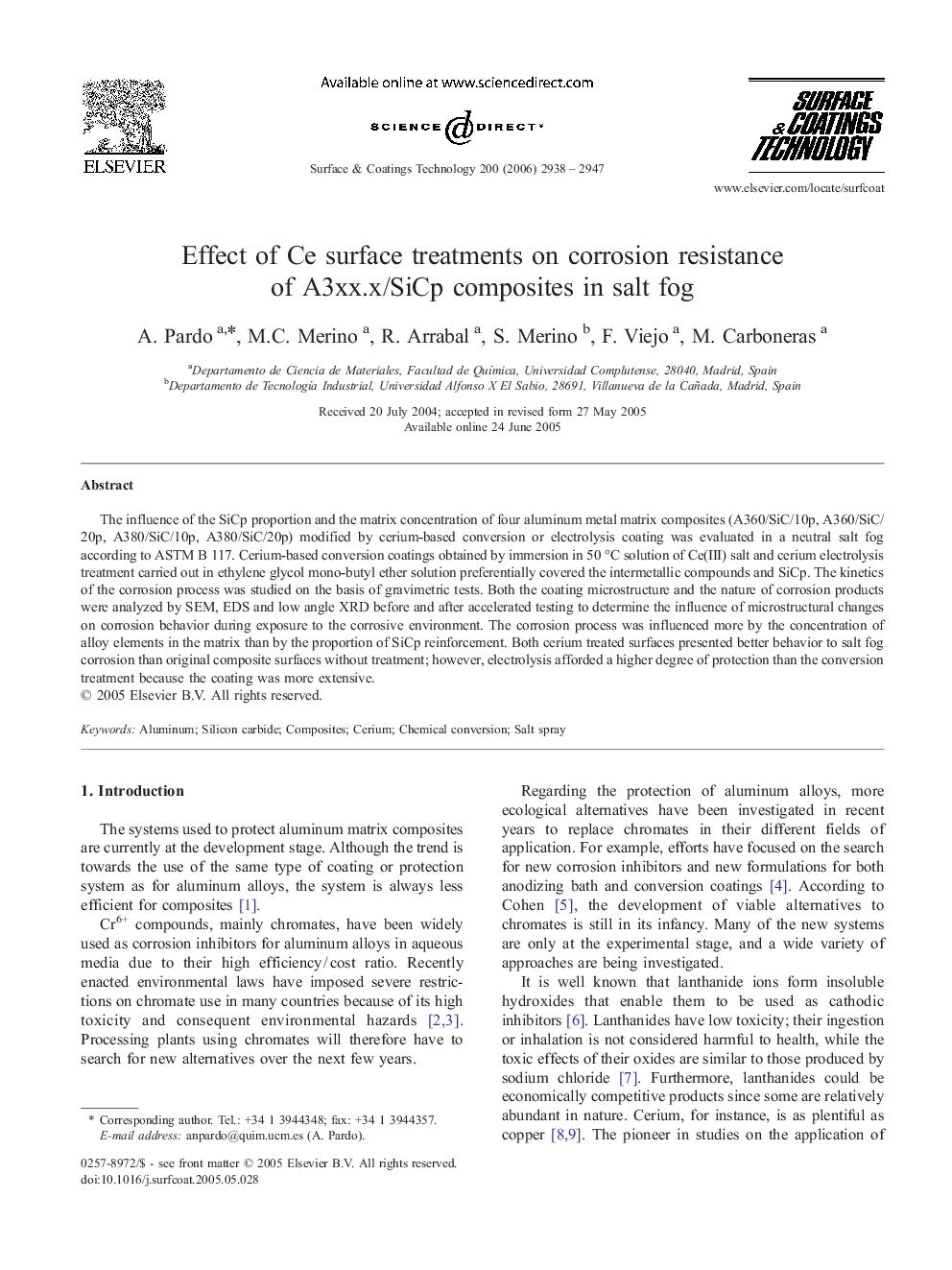| Article ID | Journal | Published Year | Pages | File Type |
|---|---|---|---|---|
| 1663279 | Surface and Coatings Technology | 2006 | 10 Pages |
The influence of the SiCp proportion and the matrix concentration of four aluminum metal matrix composites (A360/SiC/10p, A360/SiC/20p, A380/SiC/10p, A380/SiC/20p) modified by cerium-based conversion or electrolysis coating was evaluated in a neutral salt fog according to ASTM B 117. Cerium-based conversion coatings obtained by immersion in 50 °C solution of Ce(III) salt and cerium electrolysis treatment carried out in ethylene glycol mono-butyl ether solution preferentially covered the intermetallic compounds and SiCp. The kinetics of the corrosion process was studied on the basis of gravimetric tests. Both the coating microstructure and the nature of corrosion products were analyzed by SEM, EDS and low angle XRD before and after accelerated testing to determine the influence of microstructural changes on corrosion behavior during exposure to the corrosive environment. The corrosion process was influenced more by the concentration of alloy elements in the matrix than by the proportion of SiCp reinforcement. Both cerium treated surfaces presented better behavior to salt fog corrosion than original composite surfaces without treatment; however, electrolysis afforded a higher degree of protection than the conversion treatment because the coating was more extensive.
